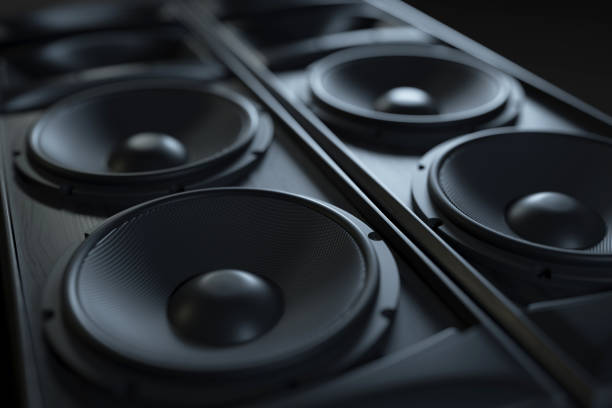The evolution of audio technology has been a remarkable journey, dramatically shaped by continuous innovations and groundbreaking developments. From the rudimentary phonographs of the late 19th century to today’s immersive surround sound systems, audio technology has consistently enhanced how we experience sound. In this article, we’ll delve into the milestones that have defined the evolution of audio technology, shedding light on how each breakthrough has influenced our listening habits and standards.
Early Beginnings: The Phonograph and Gramophone

The origins of audio technology can be traced back to Thomas Edison’s invention of the phonograph in 1877. This pioneering device was the first to record and reproduce sound, using a tinfoil-wrapped cylinder to capture audio vibrations. Following Edison’s innovation, the gramophone, invented by Emile Berliner in 1887, introduced flat discs and set the stage for the modern record industry. Both devices laid the foundation for future audio technologies, making recorded sound accessible to the masses for the first time.
The Rise of Magnetic Tape
The advent of magnetic tape in the 1930s marked a significant evolution in audio recording and playback. This technology enabled higher fidelity recordings and ease of editing, which was previously unattainable with phonographs and gramophones. Magnetic tape’s ability to record live performances and produce multitrack recordings revolutionized the music industry. Consequently, artists and engineers enjoyed unprecedented creative freedom, leading to a surge in innovation and diversity in recorded music.
Digital Revolution: CDs and Beyond
The introduction of compact discs (CDs) in the 1980s heralded the digital revolution in audio technology. CDs offered superior sound quality, durability, and convenience compared to their analog predecessors. This transition to digital formats also paved the way for other technological advancements, such as digital audio workstations (DAWs) and digital distribution. The proliferation of MP3s in the late 1990s further democratized music consumption, allowing listeners to store and share large volumes of music files effortlessly.
The Age of Digital Streaming
The turn of the 21st century saw the rise of digital streaming services like Spotify, Apple Music, and Tidal, which have transformed how we access and enjoy music. These platforms offer vast libraries of music that can be streamed on-demand, eliminating the need for physical media altogether. Streaming services also employ sophisticated algorithms to recommend music, personalized to individual tastes and preferences. As a result, music has become more accessible and customizable than ever before.
Modern Innovations in Audio Technology
Today’s audio technology continues to push boundaries with innovations such as high-resolution audio, wireless audio systems, and 3D audio. High-resolution audio offers sound quality far exceeding conventional CDs, catering to audiophiles seeking the most immersive listening experience. Wireless audio, popularized by Bluetooth and Wi-Fi, has revolutionized convenience and flexibility in setting up audio systems. Additionally, 3D audio technologies, like Dolby Atmos, create multidimensional soundscapes that redefine home entertainment and virtual reality experiences.
- High-resolution audio
- Wireless audio systems
- 3D audio technologies
Conclusion
The evolution of audio technology has undeniably altered how we interact with and appreciate sound. From the mechanical phonographs of yesteryears to the digital, immersive experiences of today, each technological leap has expanded the possibilities within the audio realm. As we look towards the future, one can only imagine the new innovations that will continue to enhance our auditory experiences, making the history of audio technology an exciting narrative of perpetual advancement.
FAQs
1. What was the first device to record and reproduce sound?
The first device to record and reproduce sound was the phonograph, invented by Thomas Edison in 1877.
2. How did magnetic tape change the music industry?
Magnetic tape allowed for higher fidelity recordings and multitrack capabilities, giving artists and producers greater creative freedom and revolutionizing the production process.
3. What impact did CDs have on audio technology?
CDs provided superior sound quality, durability, and convenience compared to analog formats, and paved the way for further digital advancements in audio technology.
4. How have streaming services changed music consumption?
Streaming services offer vast libraries of music that can be accessed on-demand, eliminating the need for physical media and personalized recommendations through algorithms.
5. What are some modern innovations in audio technology?
Modern innovations include high-resolution audio, wireless audio systems, and 3D audio technologies that enhance the quality and convenience of audio experiences.



